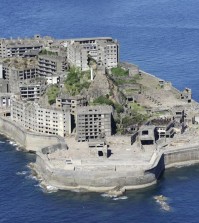- California Assembly OKs highest minimum wage in nation
- S. Korea unveils first graphic cigarette warnings
- US joins with South Korea, Japan in bid to deter North Korea
- LPGA golfer Chun In-gee finally back in action
- S. Korea won’t be top seed in final World Cup qualification round
- US men’s soccer misses 2nd straight Olympics
- US back on track in qualifying with 4-0 win over Guatemala
- High-intensity workout injuries spawn cottage industry
- CDC expands range of Zika mosquitoes into parts of Northeast
- Who knew? ‘The Walking Dead’ is helping families connect
Korean folk villages picked as UNESCO’s best heritage models
By Chung Ah-young
Korea’s UNESCO-designated “’World Heritage Sites” ― Yangdong and Hahoe villages ― have been selected as a couple of the best examples of preserving universal values in the context of sustainable development.
UNESCO published “World Heritage: Benefits Beyond Borders” last year, which profiled 26 of the 981 World Heritage sites in 160 countries.
Yangdong and Hahoe were included as examples of embodying UNESCO’s vision of nature, residents and local governments existing in harmony.
The book says that the layout of the two villages, sheltered by forested mountains, reflects the distinctive aristocratic Confucian culture of the early part of the Joseon Kingdom (1392-1910).
It says that they are “intact traditional Korean clan villages that have kept their original spatial layouts featuring three areas for productive, residential and spiritual life, which exceptionally are still functioning.”
The Korean National Commission for UNESCO recently published its Korean version, saying that Hahoe and Yangdong are now recognized as model villages due to the cooperation between the residents and their local and central governments.
Last year, UNESCO reviewed 981 World Heritage sites in 160 countries in order to select the best model cases of protecting the world cultural and natural heritage.
The two Korean folk villages were designated as the UNESCO World Heritage sites in 2010. Both located in North Gyeongsang Province, Hahoe and Yangdong are the oldest of clan communities still in existence that were typical of the Joseon’s villages.
The Hahoe Village is a one-clan community of the Pungsan Ryu families that settled in the region in the 16th century. Their homes, Confucian school, ancient structures and unique folk arts ― such as mask dances and “byeolsingut,” a shamanist rite ― are preserved in harmony with idyllic natural and geographical backdrops.
Located in the city of Gyeongju, the old capital of the Silla Kingdom, Yangdong is a community of the Wolseong Son and Yeogang Yi families who settled there in the 15th century.
Other UNESCO-registered treasures in Korea are the Depositories for the Tripitaka Koreana Woodblocks (1995), the Jongmyo Shrine (1995), the Seokguram Grotto and Bulguksa Temple (1995), the Changdeok Palace Complex (1997), the Hwaseong Fortress (1997), the Gochang, Hwasun and Ganghwa Dolmen sites (2000), the Gyeongju historic areas (2000), the Royal Tombs of the Joseon Kingdom (2009) and the Jeju Volcanic Island and Lava Tubes (2007).













